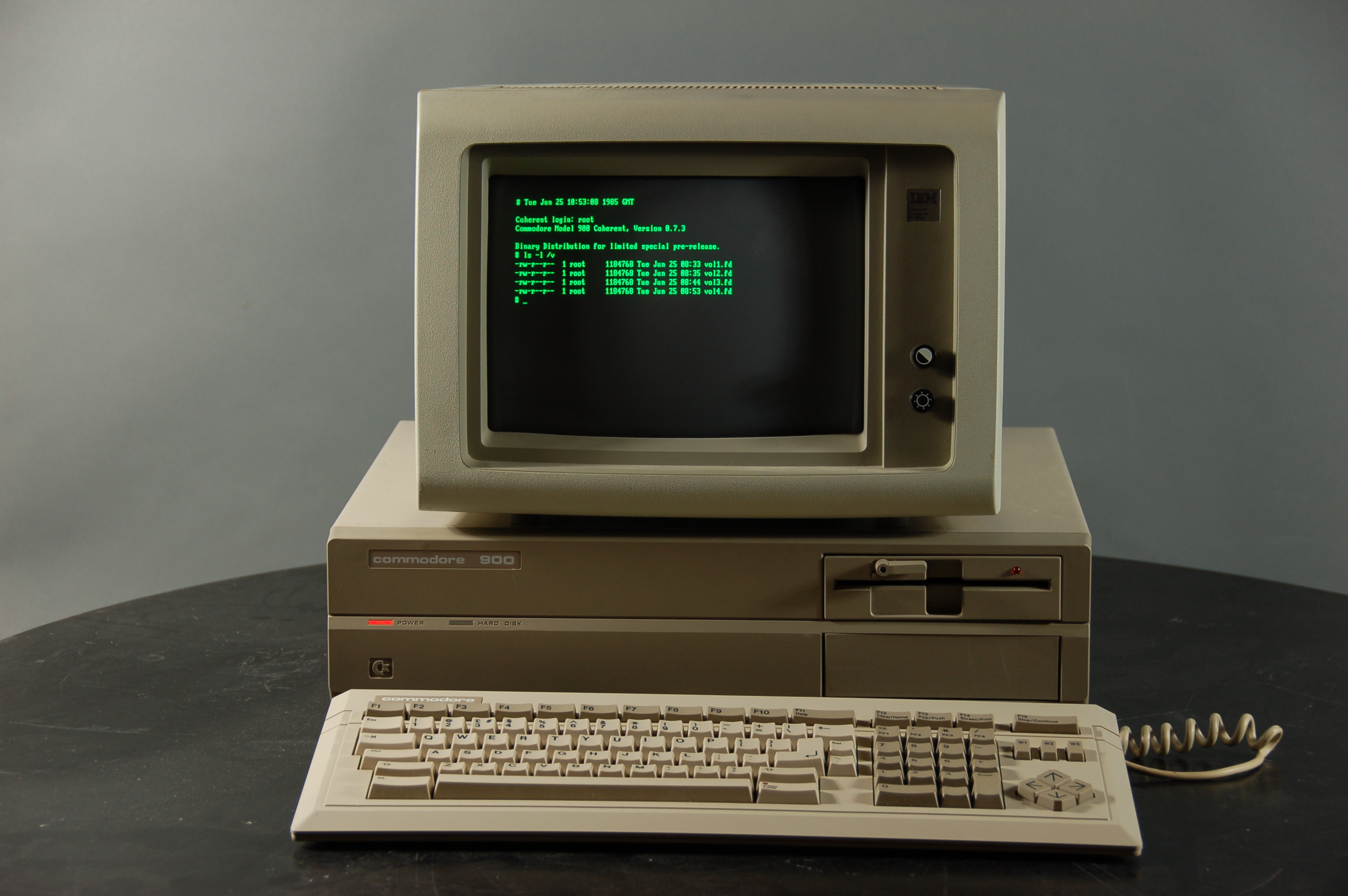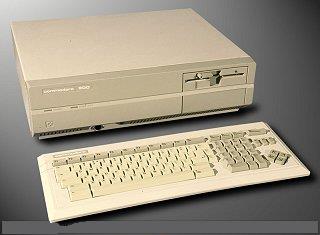Post by mirkosoft on Apr 3, 2016 18:29:32 GMT
Hi all!
In discussion of real highest resolution of VIC and VDC I posted info about Commodore 900 and its VDC 8563 - uses resolution 1024×800, here are details:
source: Secret Weapons of Commodore
aka Commodore 900, Commodore 464, Commodore Z8000, Z-Machine
Introduced CeBIT 1985
Hardware Z8001 (16bit; 23bit address bus with segment registers; early protected mode architecture [OS and user ring levels]; RISC), 512K RAM (max 2MB), 20MB HD (ST225) with reported options to 40MB or 67MB, 5.25"1.2MB disk drive (similar to the SFD 1000). Centronics and IEEE-4888 ports.
Graphics and Sound Two versions, according to Peter Kittel; the graphics version was 1024x800 monochrome (72Hz refresh on the monitor) and intended as a workstation; the server variant was character display only. Graphics powered by the 8563 VDC.
Eventual Fate Scrapped prototype; project officially discontinued in favour of the newly-acquired Lorraine, later becoming the Amiga. Some models, however, were released in Europe as development systems at around US$4000 apiece (!), even though the actual computer was never publicly released. 500 units produced.
Comments
The Commodore 900 ran a modified port of Mark Williams' SVR4 UNIX clone Coherent v0.7.3 (some 0.7.2), a prototype version, and was intended as a mainframe-class machine with multitasking, timesharing, virtual memory, multi-user capabilities -- what you would expect from a Typical Un*x Mainframe. System adminstration was accomplished through an X-Windows-like GUI on the workstation version of the 900; the text-only server flavour could be used as a workstation but was intended to be a standalone host. The Coherent package for the 900 included a C compiler, BASIC compiler and a large assortment of utilities, chosen by Commodore RandD because of its small footprint and overhead, and compatibility with System V without infringing upon it (even blessed by AT&T as a legal clean-room implementation). Unfortunately, Coherent did not include a TCP/IP stack in any of its incarnations, let alone for the 900 (bummer, because it would have been fun to host SWoC on a real live Secret Weapon!), a very shortsighted decision which likely hastened Coherent's descent into obscurity.
The 900's case is said to be very reminiscent of the Amiga 2000. Curiously, there appear to be several colours. Steve Gray's photographs, and Anthony's press mention, above are apparently of a very early prototype; the few extant 900s are in Commodore beigy-gray and were Ira Velinsky's last case design before leaving Commodore (see the B/P series entry). The Centronics, IEEE-4888 and four (!) RS-232 ports are readily apparent along with the AT keyboard jack and the 9-pin CGA output (unsurprising; it has a VDC, after all). All the known extant units are labeled as prototypes.
The Z8000 series of processors (along with their bigger brothers, the Z80000s) are very uncommon, sadly doomed despite their impressive pedigree due to long delays and innumerable fabrication bugs. Olivetti made the L1 series (m30, M40, M60) based on the Z8000, as was the Plexus P40, and Zilog also created their own system called the ZEUS (Zilog Enhanced Unix System [?]) designed as a multi-user server with some superficial similarities to the 900 itself; Cipher 99x tape drives also use them as CPUs. (Interestingly, the custom OS the Olivetti units ran, called BCOS, survives in a near total conversion that runs under SCO or Windows, according to programmer Pierangelo Indolfi who works as one of its maintainers.) The Z8000 was revolutionary for its (then unique) idea of hardware user levels; each mode had its own stack register, allowing for a primitive method of processor-based code privilege levels. Zilog extended the design further with the fully-pipelined 32-bit Z80000, an extraordinary achievement in 1986 when Intel's most advanced CPU was still the 80386. It featured a 24-bit address bus (16MB); a 256-byte onboard cache which could be frozen by software once "primed" for performance enhancement; multiprocessor support; coprocessor support (two lines); and, of course, a six stage pipeline. Intel and Motorola didn't match the Z80000's advanced pipeline architecture until 1991 with the 80486 and 68040 respectively. On the Edge comments that Commodore was even in negotiations to buy Zilog outright (!); this would have been a strange fit with their strongly 6502-centric extant semiconductor branch and the deal, probably mercifully, fell through.
According to Jim Brain, the 8563 (designed as a colour 6845; it became the 128's 80-column video chip) was intended and designed for the 900s, but of course the 8563 has plenty of applications beyond that. In fact, an fragment of an E-mail I ran across from Dave Haynie mentioned that the 8563, in tow with a sidecar CPU (undoubtedly a 6502 in some form) and ACIA (6551?), was to be the centrepiece of cheap multi-user terminals set up around the CBM 900 -- no less than glorified 6502-based Xterms. Clever! The article Anthony furnishes above also mentions an integrated terminal, which may or may not be the same thing, but it does talk about an optional multi-user card with eight additional RS-232 ports which was undoubtedly the core of this idea. Whether this card got finished is another story altogether.
Speaking of cards, the CBM 900 was supposed to be highly expandable; Dave says the expansion cards designed for the 900 were actually stacked on each other, a la PC 104-style. One device, unclear if it was finished or actually ever existed, was a blitter ('bit-blt') that could plug into the server's device slots. In some respects, says Dave, it was actually more sophisticated than the Amiga's blitter as it could take real pixel coordinates instead of kludgey offsets and modulos.
The Z-Machine guys (in two generations; the first designers, having failed, turned development over to the second team of George Robbins and Bob Raible [Dave Haynie]), were paragons of lunacy according to Bil Herd; the only things to survive from that project, besides the 8563 (the 8563 is a story in futility in itself; its misadventures in the 128's development cycle are in the entry for the D128), were a strange disk controller that asked for the desired sector and cylinder on every access (though Joe Forster/STA points out that IBM mainframes do much the same thing for disk access as a way of facilitating multitasking), and a legendary practical joke where the 900's engineers stole the furniture from the Commodore office lobby and made their own lounge disguised as a VAX repair depot.
The 900 was not Commodore's only flirtation with Unix and Unixy things, though the 900 was their first. Commodore briefly experimented with porting SVR4 Unix to the Amiga 2500, coined "Amix" and rumoured to be highly stable and effective as a server operating system. Naturally, Commodore canned it outright soon after it was completed. Amigas could also operate in the Transputer parallel computing environment (running the Helios OS) with an add-on card, and of course while not an official CBM port Amigas have run NetBSD for years. There was also the limited run Amiga 3000UX, which ran Unix natively.
The 900, however, remains distinct not only for its noteworthy processor and technical achievement, but also its significant differences from just about every other computer Commodore ever made in its corporate lifetime. In fact, most damning of all, Dave points out that the 900 was one of the first megapixel Unix workstations (the only others were the anaemic Sun and Apollo boxes) and was actually ready to ship when Commodore bought Amiga and torched the project completely. It could very well have changed the face of servers for good had it been released.



Miro


